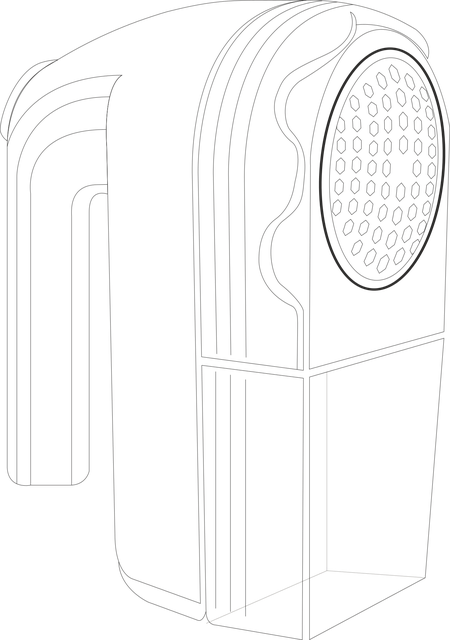This guide addresses stain removal and prevention for grout lines, emphasizing understanding causes (moisture intrusion, improper sealing), regular maintenance, and using appropriate tools and materials. It recommends protective gloves, grout cleaning solutions, baking soda paste, mild dish soap, commercial cleaners, oxygen-based bleaches, acid-based products, eco-friendly options (baking soda, vinegar), professional services, and regular spot cleaning with enzyme-based cleaners for long-lasting results ("Remove Stains from Grout Lines").
Tired of unsightly grout stains ruining your tiled surfaces? Discover expert solutions to effortlessly remove even persistent grout lines. This comprehensive guide covers everything from identifying stain causes to eco-friendly cleaning methods. Learn about effective pre-treatment techniques, powerful chemical solutions, and natural alternatives. We’ll also explore professional services and maintenance tips to prevent future grout stain issues. Take control of your tiled spaces!
Understanding Grout Stain Causes

Grout stain causes can vary, but understanding them is crucial when it comes to effective removal. Common factors contributing to grout stains include moisture intrusion, improper sealing, and exposure to various substances like dirt, grease, or even mold. Moisture penetration, especially in high-humidity areas, can weaken the grout’s integrity over time, allowing stains to set in more easily.
Improper sealing is another leading cause. Grout needs to be sealed properly to create a protective barrier against liquid and solid contaminants. Without this seal, grout lines become vulnerable to staining, making regular maintenance and re-sealing essential for stain prevention.
Gather the Right Tools and Materials

Removing stains from grout lines requires a few simple tools and materials. Start by gathering a wire brush, a grout cleaning solution or baking soda paste, a sponge, warm water, and protective gloves. The wire brush is essential for scrubbing away stubborn debris and dislodging any built-up grime within the grout lines. Baking soda mixed with water creates a natural, effective cleaning agent that’s safe for most surfaces and materials.
Once you have your supplies ready, put on the protective gloves to shield your hands from harsh chemicals or abrasive bristles. Dampen the sponge in warm water and wring it out to avoid excess moisture. Apply the grout cleaner or baking soda paste directly to the stained areas, gently rubbing it into the grout lines with the wire brush. Rinse thoroughly with a damp cloth or sponge and dry completely to restore the grout’s clean, crisp appearance.
Pre-Treatment Methods for Effective Stain Removal

Before tackling grout stains, it’s crucial to prepare the surface properly for effective stain removal. Pre-treatment methods play a vital role in achieving clean and bright grout lines. Start by sweeping or vacuuming the floor to eliminate any loose dirt or debris. Then, gently scrub the stained areas with a soft-bristled brush dipped in warm water mixed with mild dish soap. This initial step helps loosen stubborn stains, making them easier to remove.
For more persistent stains, consider using a commercial grout cleaner or creating a homemade solution of equal parts vinegar and baking soda. Apply this mixture to the affected areas, let it sit for several minutes, and then scrub gently. If the stains remain, repeat the process until you achieve the desired result—clean and stain-free grout lines.
Chemical Solutions for Persistent Stains

When dealing with persistent stains in grout lines, chemical solutions can be a highly effective approach. These specialized products are designed to penetrate and dissolve stubborn contaminants, ensuring thorough cleaning. From oxygen-based bleaches to acid-based cleaners, various options cater to different types of stains, including mold, mildew, and mineral deposits.
For optimal results, it’s crucial to follow the product instructions precisely. Testing on a small, inconspicuous area first can help prevent damage or discoloration. Regular maintenance and prompt cleaning after spills are key to preventing new stains from forming, making chemical solutions a valuable tool in keeping grout lines looking fresh and clean.
Natural Cleaning Approaches for Eco-Friendly Options

When it comes to eco-friendly grout stain solutions, natural cleaning approaches offer a safe and sustainable alternative. Instead of harsh chemicals, consider using baking soda and vinegar for their powerful yet gentle stain-removing properties. A simple mixture of equal parts vinegar and water, or a baking soda paste, can effectively lift stains from grout lines without damaging the surrounding tile or causing harmful emissions.
These natural remedies not only contribute to a cleaner environment but also provide long-lasting results. Regular maintenance with these solutions can help prevent future staining by keeping grout lines free of dirt and grime. This eco-conscious approach allows you to enjoy fresh, clean spaces while promoting a greener lifestyle.
Professional Grout Cleaning Services

When it comes to tackling tough grout stains, professional cleaning services offer a comprehensive solution. These experts have access to powerful yet safe cleaning agents and advanced tools designed specifically for grout stain removal. Their expertise lies in identifying the root cause of the stain and selecting the most effective method to treat it without damaging the grout or surrounding tiles.
Professionals can efficiently remove stains from grout lines, restoring the cleanliness and aesthetic appeal of your space. They understand that proper maintenance is key to preventing future stains, so they often provide valuable tips and recommendations for regular cleaning routines, ensuring your grout stays fresh and vibrant for longer periods.
Maintenance Tips to Prevent Future Stains

Regular maintenance is key to preventing grout stains from reoccurring. Keeping your grout lines clean and free from debris is essential, so make it a habit to sweep or vacuum them frequently, especially in high-traffic areas. A mild detergent and warm water are all you need for quick spot cleaning. For more stubborn stains, consider using specialized grout cleaners that contain enzyme-based formulas, which effectively break down and remove organic stains without damaging the grout.
Additionally, sealing your grout after cleaning can provide a protective barrier against future stains. Sealants create a hydrophobic layer, repelling water and oil-based substances, making it easier to maintain a stain-free environment. Remember, preventing stains is always more efficient and less time-consuming than removing them later.
